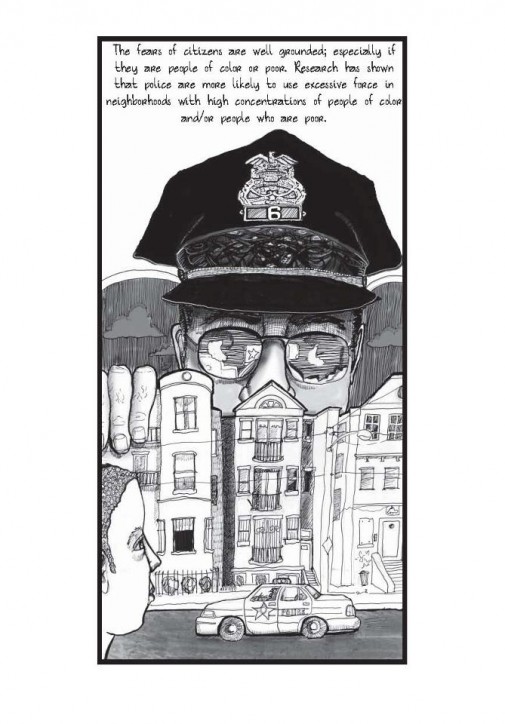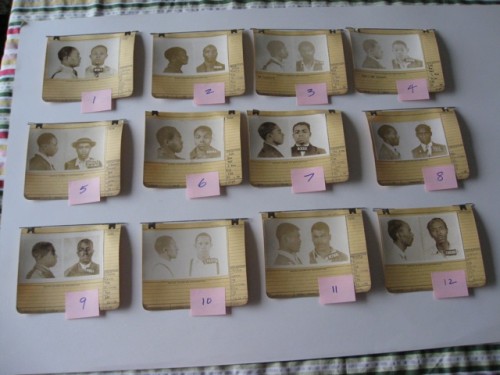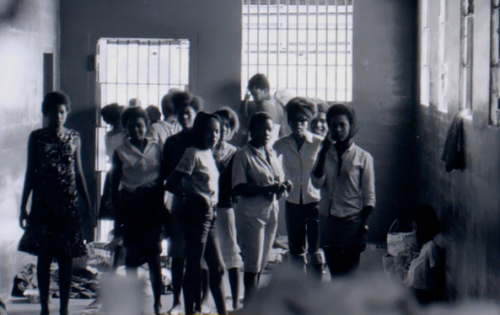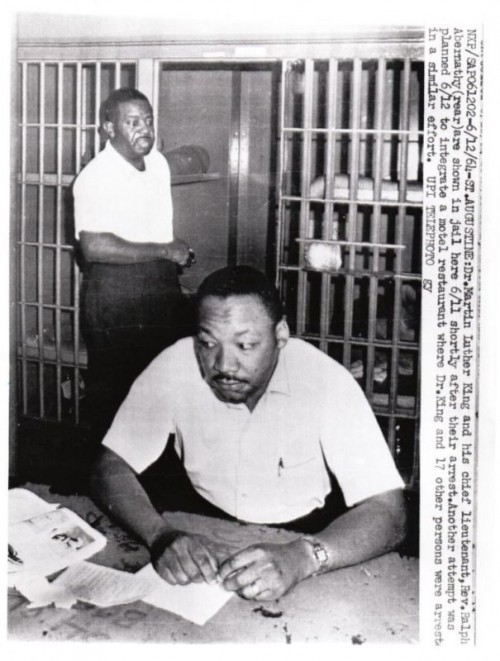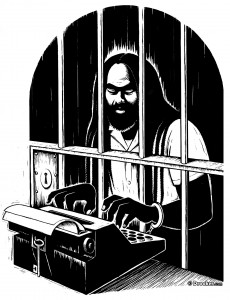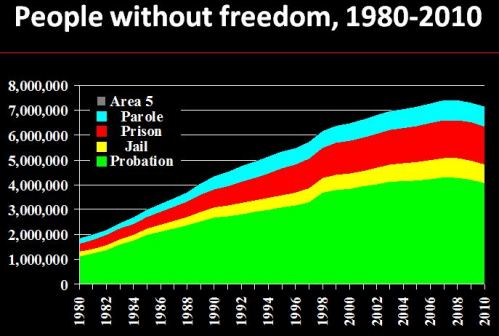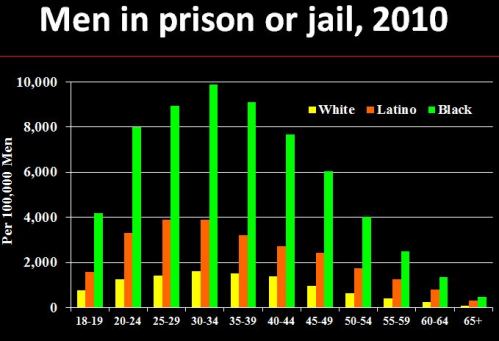When we last left the story of Laura Scott, I was previewing the fact that I would be sharing more about her life in the coming weeks. Well my first discovery was that the Bertillon card that I purchased actually represented her second incarceration at San Quentin Prison in 1908. That’s right, from what I have been able to gather so far, Laura Scott did at least two stints at San Quentin. The first seems to have been in 1905 and the second in 1908. However, my research is ongoing so I could still discover new information that could change these facts.
In 1905, Laura Scott was arrested in Los Angeles County. The charge was grand larceny. She was sentenced to one year at San Quentin Prison. Two items appeared in the Los Angeles Herald which provide us with the context for this incident. First, this on July 14th, 1905:
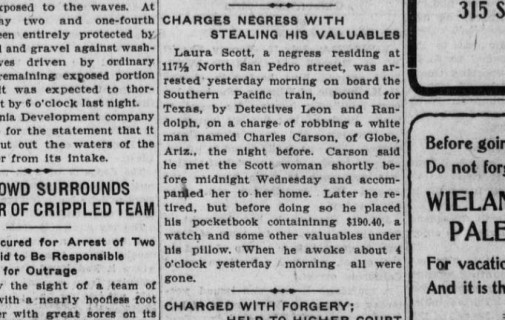
Then, this on August 5, 1905:
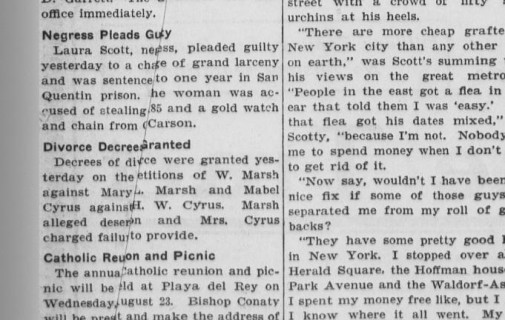
“Laura Scott, negress, pleaded guilty yesterday to a charge of grand larceny and was sentenced to one year in San Quentin prison. The woman was accused of stealing (.85?) and a gold watch and chain from Carson. ”
We have an unusual amount of information about Ms. Scott’s appearance through her arrest records, mug shot photographs, as well as information gathered from her prison records. In San Quentin’s Descriptive Register of Prisoners housed at the Bancroft Library at UC Berkeley, Laura Scott is described as having heavy ears, a scar near her left eyebrow, and thick lips. [There’s an interesting story about that scar which I will share at a later date.] She weighed 150 lbs, was 5 foot 6 inches tall, wore size 5 shoes, had a black complexion, brown eyes, and black hair. Her 1908 Bertillon criminal card describes her as having lips that were “thick” and “protrude.” Her skin had numerous dark blotches and her build is listed as medium.
Laura was one of only a few women arrested in California in 1905. It was rare for women in that period to come into contact with the law. Therefore, in this way, Laura Scott was exceptional. In an article about female violence in pre-1910 California, historian Linda Parker writes that:
“From 1880 through 1910, 231 women (1.4%) entered San Quentin out of approximately 16,630 prisoners. Murders, assaults, and robberies represented twenty percent (forty-six inmates) of the convictions, which was less than that for male prisoners. ”
Theft was the most common reason women found themselves incarcerated in California at the turn of the century. Once again Linda Parker (1992) is instructive: “The San Quentin Prison Register from 1880-1910 showed that the women imprisoned at the facility committed grand larceny (forty-seven percent) far more often than any other crime.” In this, Laura Scott seems not to have stood out.
Laura was a “dress-maker/seamstress” with a grade school level education. Available prison records describe her education as poor or fair (depending on the year) and she seems to have attended a public school. According to the 1910 Federal Census, Laura was literate, she could read and write. It seems that she had some basic level of schooling as a child, perhaps attending one of the Freedman Bureau schools in Alabama. Her religion is listed as Protestant.
Linda Parker provides some insight into life for women in California during this period:
“Before 1910 the women of California, like people in other states, lived under state laws that favored male dominance. Many towns enacted laws prohibiting women from wearing men’s clothing even though shirts and trousers were more comfortable and practical for a number of occupations, including farm work. In a typical marriage, fathers assumed sole guardianship of all children, including their care, education, custody and services. Community property of a marriage was also controlled by the husband. He could not sell it without the wife’s consent but he could will one-half of it away. If the wife died first she had no rights to convey her share of the property. Although women paid taxes, they could not vote in California until 1911. Women accused of law violations were “arrested by men, imprisoned with men…tried in a court by men lawyers, jurors, and judges according to man-made laws.”
Laura Scott seems to have eschewed the conventions of her time. She was divorced and did not have any children. An interesting notation appears in her San Quentin records: “habits Liq. and Tobacco.” This suggests that Ms. Scott drank alcohol and smoked. These habits would certainly not have been considered ladylike. Laura Scott was ahead of her time to be sure. Some questions to leave you with: “What was Laura Scott doing with a white man from Arizona in her home at midnight?” Perhaps she was sewing him a new suit given her skills as a seamstress…
Stay tuned for the next installment of Laura Scott’s story…
